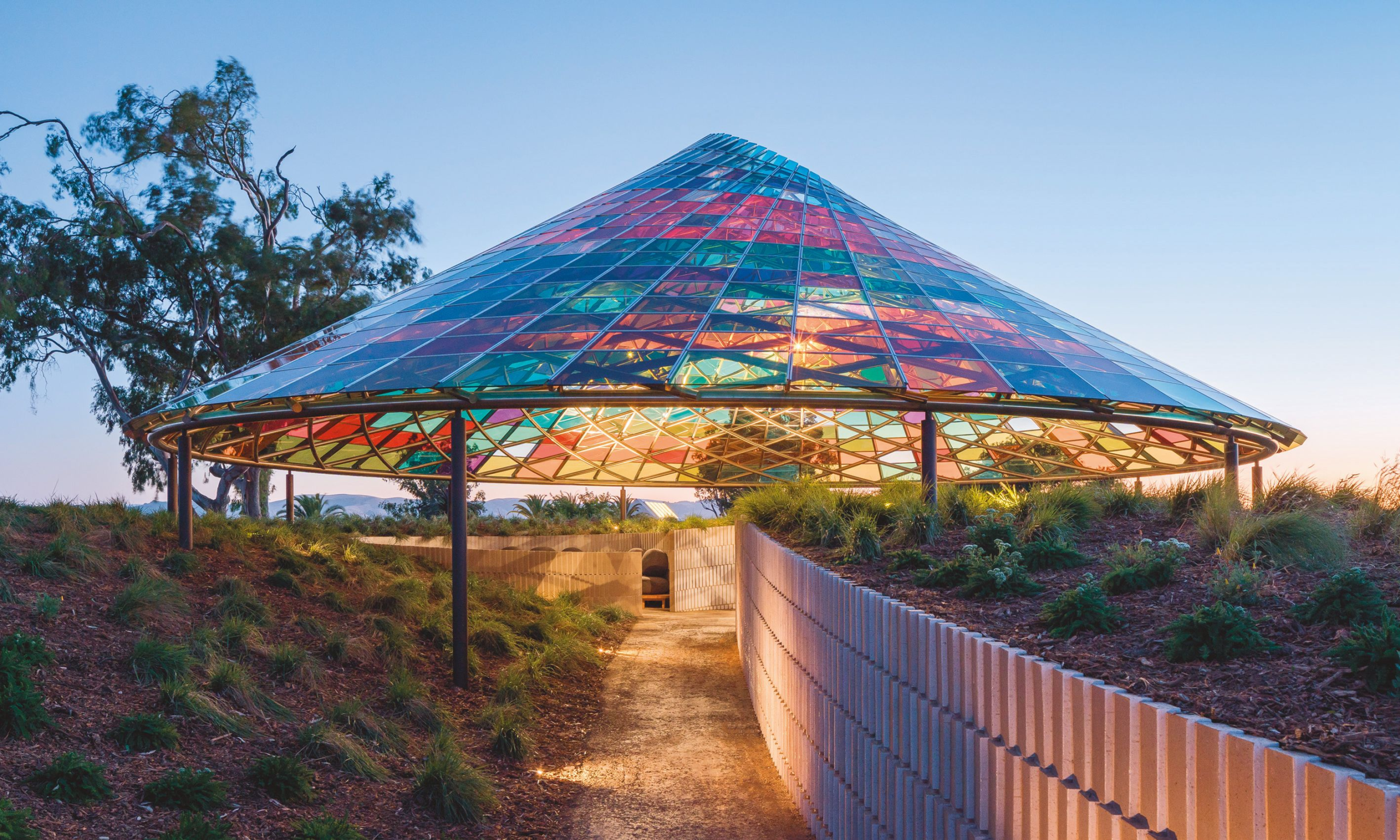The Vertical Panorama Pavilion—designed by Berlin-based design firm Studio Other Spaces, founded by artist Olafur Eliasson and architect Sebastian Behmann—at the Donum Estate in California, US, a private sculpture park, vineyard and farm. Photo: Adam Potts; © The Donum Estate; Studio Other Space
Germany took the top slot for the number of private museums of contemporary art, according to a new report that has just gone live—just pipping the US by a single figure.
The report is the brainchild of Christoph Noe, the founder of the art collector data company Larry’s List, working with a team of researchers including the Hong-Kong based Jamie Bennett and the University of Amsterdam academic Olav Velthuis.
The number of museums they record has grown, up from 317 in their previous 2016 report to a stunning 446 this year. And the line-up has also changed: in 2016 South Korea was number one, while Germany only came in third. This time five countries dominate the list: Germany (60), the US (59), South Korea (50), Greater China (30) and Italy (30). Interestingly, these countries are home to half of all private museums in the world—not necessarily the biggest, though, but the sheer number of them beats out the 54 other countries listed.
According to Noe, collectors in these five countries are more likely to want to make their collections physically available to the public—and may have just a space that was converted from an apartment. “But for China and South Korea, we see rather large museum set-ups,” he says.
Asia, inevitably, is of growing importance in this landscape, and the report takes a deep dive into South Korea and notably its capital Seoul, the city with the highest number of private art museums in the world. Asked why, Noe says: “Seoul is where the art market in South Korea was first formed and art museums were first built, and the corporate presence is strong.” He adds: “Millennials [born 1981-96] and Gen Z [1997-2012] represent more than one-third of Seoul’s population, and the museums make extra efforts to attract young art-goers.”
What is also astonishing is that, according to the report, 82% of all existing private museums of contemporary art were founded since 2000, and 152 were established in the past decade alone.
The Boros Collection, housed in a vast converted Second World War bunker in Berlin, opened in 2008 to display the contemporary art collection of Karen and Christian Boros
Photo Boros Collection, Berlin, © NOSHE
“Obviously, having your own museum is linked to resources—you have to have a collection, money and a space,” Noe says. “But this is definitely a trend. The founders are watching what others are doing and emulating them. Having your own museum is the highest status symbol possible, but it’s not just about vanity, it is also about sharing your collection with others.” And, he adds: “There is also getting better access for the most sought-after artists and artworks—much easier if they are going into your own museum.” Finally, he notes: “Museum founders see a need to nurture and protect culture and fill in a gap left by a lack of public institutions—and they have the resources to do so. So a private collector has over recent years developed a more public footprint.”
Inevitably, the figures are not entirely set in stone—definitions can be difficult—but Noe says that his team have improved their data and methodology since the first report, which partly impacts their findings.
As for the effect on the art market of all these new museums, Noe is enthusiastic: “The growth in numbers is 100% good news,” he says: “All these private museums provide inspiration at the global level, they play a vital role in giving artists greater exposure.” And, “at a time when government support for public museums is not on the rise”, he says diplomatically, “they provide wonderful display cases for contemporary art,”—something that he, who is also an art adviser, can only applaud.
• Georgina Adam is the author of The Rise and Rise of the Private Art Museum (Lund Humphries, 2021)

